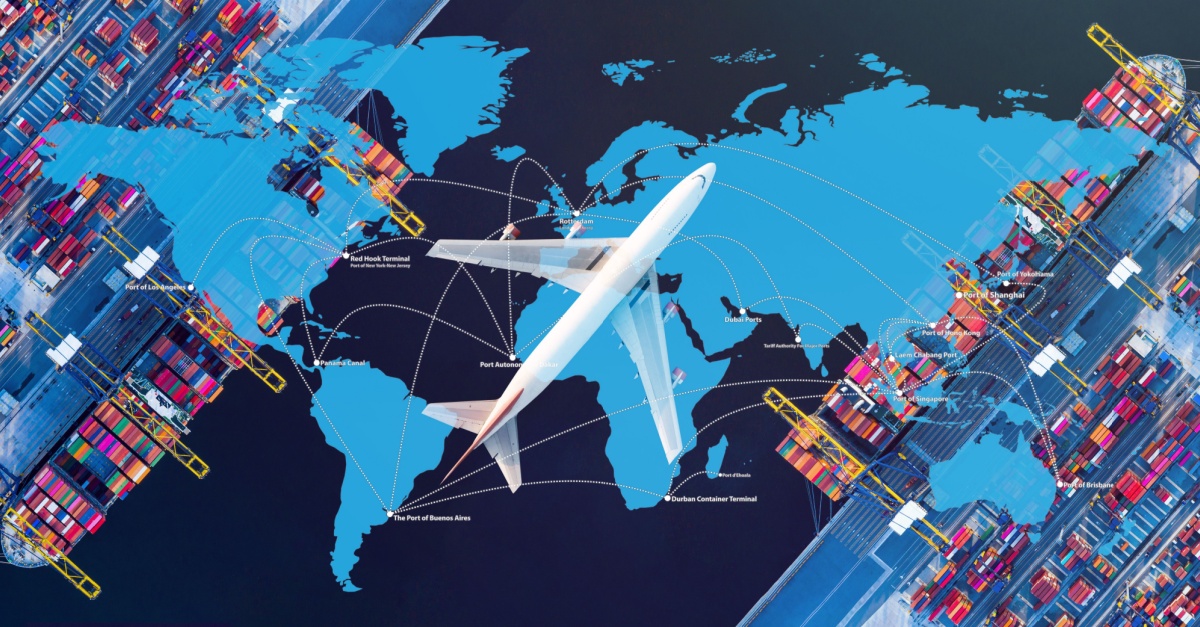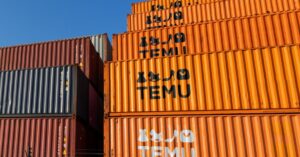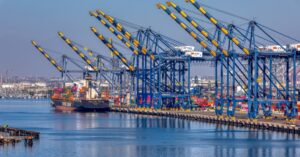With supply chains that are growing increasingly complex and vulnerable to disruption, especially given the uncertain impacts of the growing trade war, shippers can no longer afford to rely on fragmented transportation strategies.
The best approach in the face of these multifaceted challenges is to adopt holistic supply chain optimization. This comprehensive approach works across transportation modes, leveraging technology to increase resilience and maintain service levels without losing sight of cost efficiency.
The basic idea is to view your supply chain as an integrated whole rather than a collection of isolated functions. From trucking and rail to ocean and air freight, each mode has its role to play. The real power lies in how they are combined strategically.
Multimodal Networks, Smarter by Design
For experienced logistics teams, the challenge isn’t so much choosing a mode; it’s knowing when to shift between them. None of them in isolation offers the perfect blend of cost, speed, reliability, and sustainability. True optimization involves modal orchestration, i.e., sequencing based on dynamic business needs and market conditions.
The strength of a high-performing supply chain lies in its flexibility. Whether converting truckload to intermodal to save on costs, shifting to expedited freight during peak, or rerouting from port congestion to railheads, a holistic multimodal strategy increases both flexibility and operational efficiency.
Data and Visibility Drive Modal Coordination
Holistic optimization is impossible without greater supply chain visibility. Modern TMS software, integrated with carrier networks, gives logistics teams access to real-time shipment status, inventory location, and transit analytics. This visibility empowers dynamic rerouting in response to congestion or weather, balancing service and cost in real time, and accurate forecasting that informs routing and mode planning.
Advanced analytics are the brains behind multimodal decision-making. By analyzing performance across lanes, carriers, and modes, shippers can proactively identify cost savings, uncover service bottlenecks, and improve on-time performance. The future of optimization isn’t about better guessing; it’s about knowing more, sooner.
Strategic Modal Matching in Practice
Experienced logistics professionals understand that modal selection isn’t a static formula but a strategic match between freight characteristics, transit requirements, and external constraints. The most effective supply chains engineer flows based on:
- Product sensitivity and handling requirements.
- Customer expectations and SLAs.
- Seasonal demand spikes or volatility.
- Fuel surcharges, capacity constraints, and labor availability.
This level of strategic alignment requires both internal collaboration and external expertise. Modal shifts only work when backed by robust planning and a reliable 3PL solutions provider.
Breaking Down the Silos
One of the greatest barriers to holistic optimization is the patchwork of modal silos that grow up within an organization and become ossified. When trucking, ocean, and air teams operate in isolation, or when procurement and logistics strategies diverge, opportunities for efficiency are lost.
Integrated planning breaks down these silos, aligning logistics, procurement, and customer service under shared KPIs and a common visibility framework. This leads to:
- More consistent customer service outcomes.
- Smarter carrier and mode procurement strategies.
- Improved sustainability through mode shifts and routing optimization.
At the organizational level, this shift requires a mindset change. Supply chain execution needs to be viewed not as a series of handoffs, but as a continuous, data-enabled process.
A Foundation for Resilience and Growth
If recent years have proven anything, it’s that supply chain agility is no longer a luxury. Between labor disruptions, a pandemic, global trade disputes, and extreme weather, the ability to shift, scale, and adapt is essential. Holistic supply chains, built across modes and connected by a strong network of data and partners, are resilient by design.
Whether the driver is cost volatility, service risk, or carbon reduction, shippers that take a cross-modal view are better equipped to make smart trade-offs. They can also recover faster when the unexpected hits.
The Role of a Trusted 3PL Partner
True multimodal optimization doesn’t happen in a vacuum. It takes the right logistics partner that understands mode integration, has access to a diverse carrier network, and can act on real-time data.
At COGISTICS Transportation, we specialize in helping shippers build seamless, data-driven supply chains across land, air, and ocean freight operations. From dynamic carrier selection to strategic modal conversion and custom logistics, we act as an extension of your team, applying decades of expertise overlaid with advanced technology to every shipment and load.
We offer:
- Integrated transportation management across all modes.
- Real-time shipment visibility and event tracking.
- Customized optimization strategies aligned to your business goals.
- Proactive capacity planning.
Let us help you move beyond an inefficient piecemeal approach and unlock the value of true multimodal integration. Get in touch with us today to start building greater supply chain resilience that can help you mitigate market shocks.




